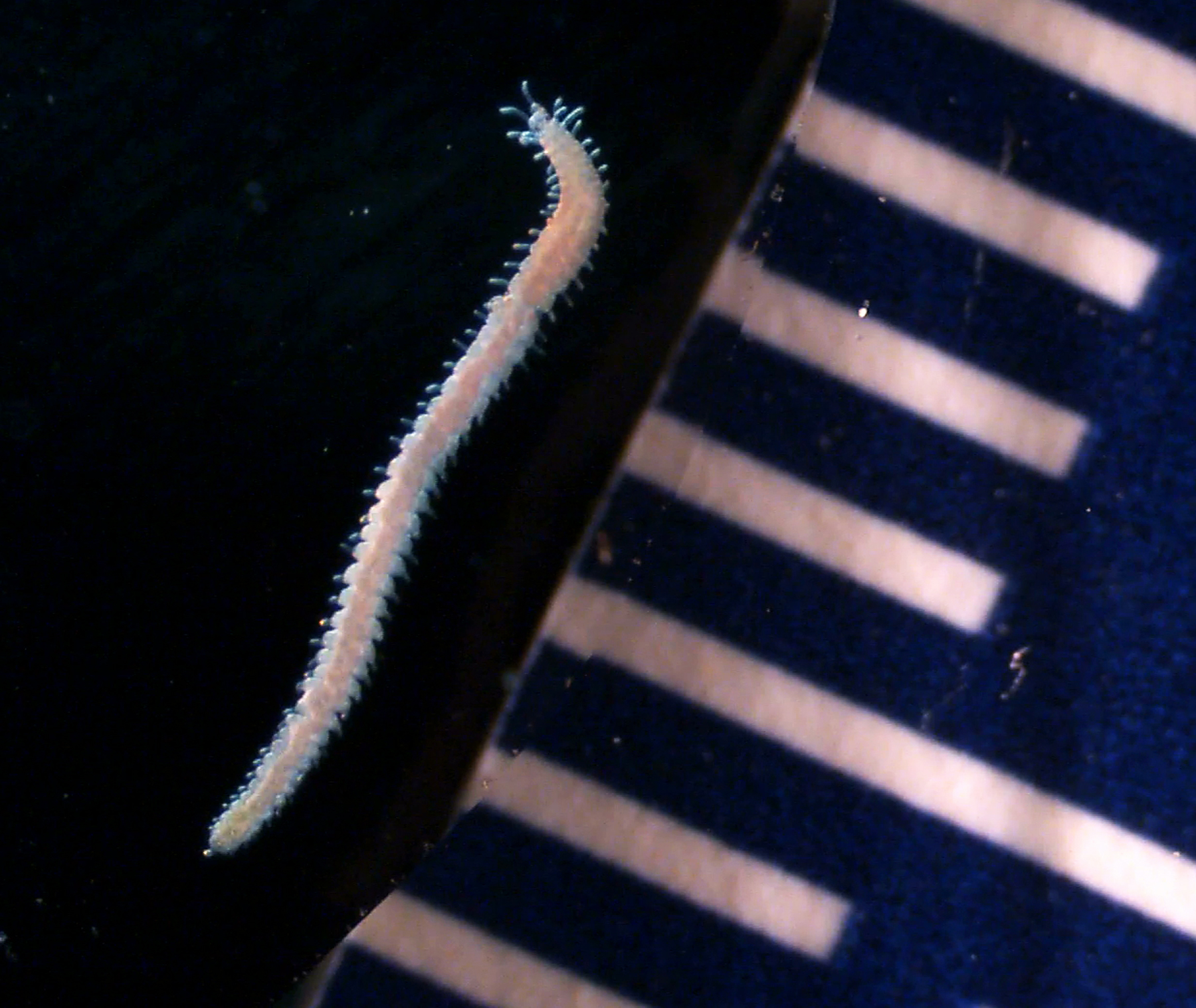Radioles of a sabellid polychaete (Parasabella sp.)
Introduced barnacle (Amphibalanus subalbidus)
Our lab is passionately interested in the biology of marine invertebrates. We teach several undergraduate courses that highlight the remarkable diversity of marine invertebrates found in northern California. In our free time, we can often be found exploring local shorelines during low tide, and our observations and discoveries of invertebrate diversity are often shared through Jackie Sones’ blog, The Natural History of Bodega Head. Some of these explorations invariably lead to research questions. As a result, we have a growing list of side projects in progress, including studies involving all of the species illustrated on this page. These studies are grounded in our appreciation for marine invertebrates and are ultimately aimed at better understanding the diversity, distribution, ecology, and life histories of these amazing animals.
Unidentifed sea anemone washed ashore in Bodega Bay on Japanese tsunami marine debris.
Unidentified staurozoan (Haliclystus sp.) from Bodega Bay.
Close-up of staurozoan tentacles.
Blister on the hydrocoral Stylantheca papillosa created by the Autolytinid polychaete Procerea penetrans (right).
Recruitment of juvenile sea stars (Pisaster ochraceus)
Longevity of the barnacle Semibalanus cariosus.
Purple Sea Snail (Janthina umbilicata) washed ashore in Bodega Bay in January 2016.
Diversity of ribbon worms in the Bodega Bay region.
Selected Publications
Longman, E.K., S. Merolla, S.A. Talke, N. Trautman, J. Largier, L. Harris, and E. Sanford. 2025. Evaluating historical changes in a mussel bed community in Northern California. Scientific Reports 15, Article number: 1930.
Ellison, C.I., M.R. Frey, E. Sanford, and S. Maslakova. 2024. Ribbon worms (phylum Nemertea) from Bodega Bay, California: A largely undescribed diversity. ZooKeys, DOI: 10.3897/zookeys.1204.117869
Sanford, E., J.L. Sones, M. García-Reyes, J.H.R. Goddard, and J.L. Largier. 2019. Widespread shifts in the coastal biota of northern California during the 2014–2016 marine heatwaves. Scientific Reports, doi.org/10.1038/s41598-019-40784-3 OPEN ACCESS
Agha, M., M.K. Riley, E. Sanford, J.T. Carlton, W.A. Newman, and B.D. Todd. 2018. A review of epizoic barnacles reported from freshwater turtles, with a new record from California. Herpetological Review 49(1): 25–28.
There is a long history of study of marine invertebrates in the Bodega Bay region, dating back to before the founding of Bodega Marine Laboratory by the invertebrate zoologists Drs. Cadet Hand and Ralph Smith. To celebrate this tradition during BML’s 50th Anniversary (2016), we produced the short video below — Fifty Years of Spineless Wonders. Enjoy!











